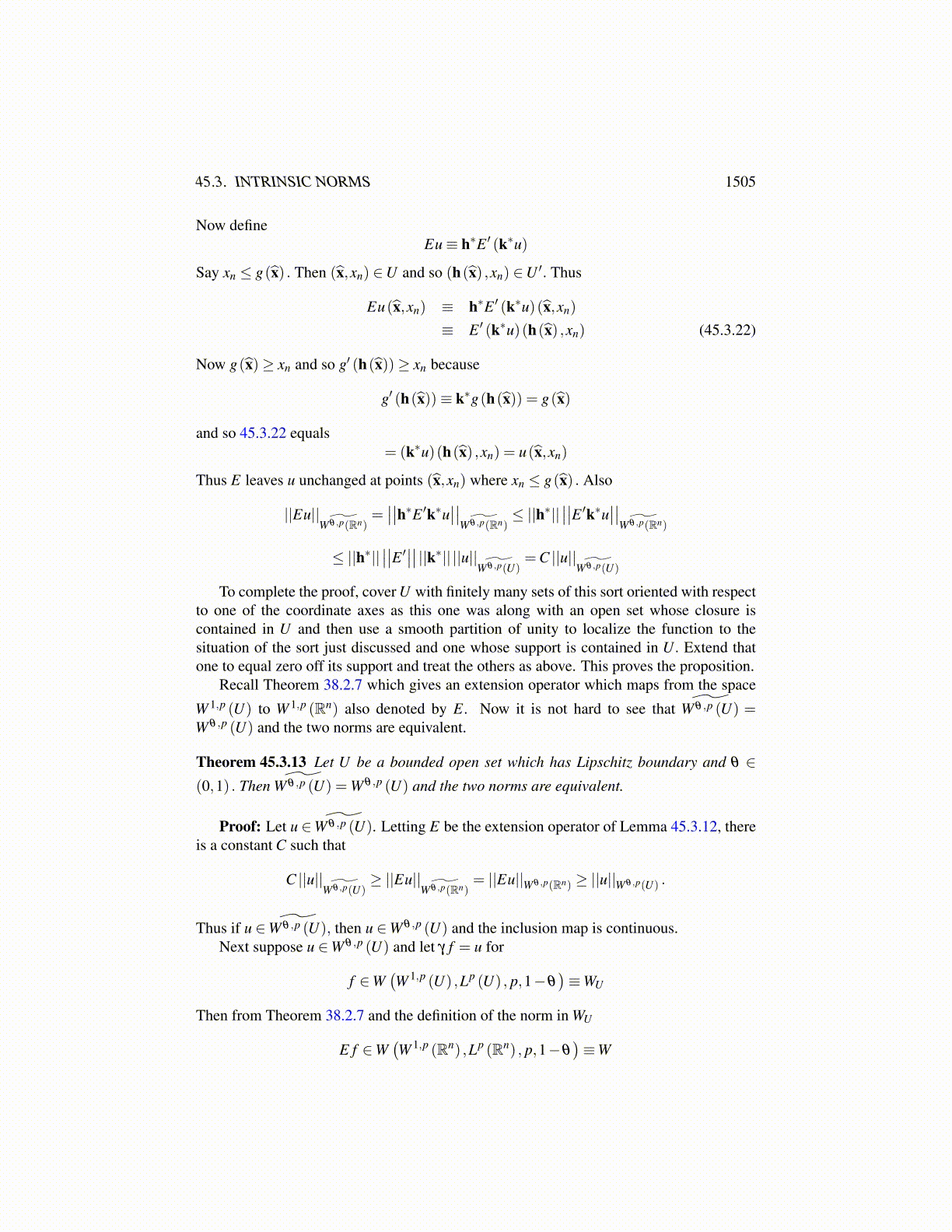
45.3. INTRINSIC NORMS 1505
Thus,
(yn− xn)2 ≥ 1
2|xn− zn|2−
12|x̂− ŷ|2
and so, the above change of variables results in an expression which is dominated by∫U
∫U
|u(x̂,xn)−u(ŷ,zn)|p∣∣∣ 12 |x̂− ŷ|2 + 1
2 (xn− zn)2∣∣∣(1/2)(n+pθ)
dydx
where y refers to (ŷ,zn) in the above formula. Hence there is a constant C (n.θ) such that45.3.17 is dominated by C (n.θ) ||u||p˜W θ ,p(U)
. A similar inequality holds for the third term.
Finally consider 45.3.19.This equals∫U+
∫U+
|u(x̂,2g(x̂)− xn)−u(ŷ,2g(ŷ)− yn)|p∣∣∣|x̂− ŷ|2 +(xn− yn)2∣∣∣(1/2)(n+pθ)
dxdy
Changing variables, x′n = 2g(x̂)− xn,y′n = 2g(ŷ)− yn, it equals∫U+
∫U+
|u(x̂,x′n)−u(ŷ,y′n)|p∣∣∣|x̂− ŷ|2 +(xn− yn)
2∣∣∣(1/2)(n+pθ)
dx′dy′, (45.3.20)
each of xn,yn being a function of x′n,y′n where an estimate needs to be obtained on |x′n− y′n|
in terms of |xn− yn| . (x′n− y′n
)2= (2(g(x̂)−g(ŷ))+ yn− xn)
2
= (yn− xn)2 +4(g(x̂)−g(ŷ))(yn− xn)
+4(g(x̂)−g(ŷ))2
≤ (yn− xn)2 +2(g(x̂)−g(ŷ))2
+2(yn− xn)2 +4(g(x̂)−g(ŷ))2
and so (x′n− y′n
)2 ≤ 3(yn− xn)2 +6K2 |x̂− ŷ|2
which implies
(yn− xn)2 ≥ 1
3(x′n− y′n
)2−2K2 |x̂− ŷ|2 .
Then substituting this in to 45.3.20, a short computation shows 45.3.19 is dominated byan expression of the form C (n,θ) ||u||p˜W θ ,p(U)
and this proves the existence of an extension
operator provided the Lipschitz constant is small enough. It is clear E is linear where E isdefined above.
Now this assumption on the smallness of K needs to be removed. For (x̂,xn)∈U define
U ′ ≡{
x̂′ = λ
(x̂− b̂0
): x̂ ∈U
}